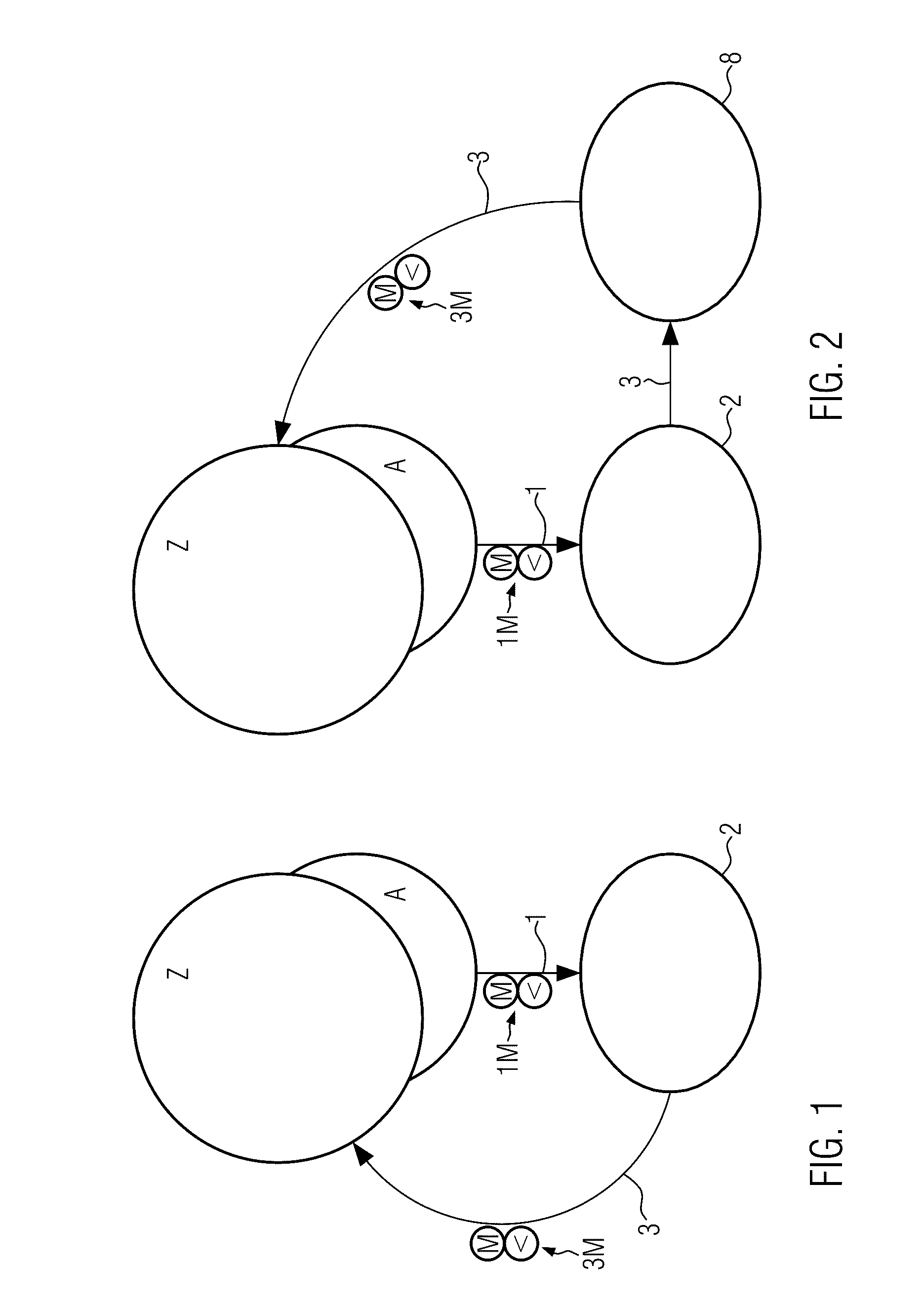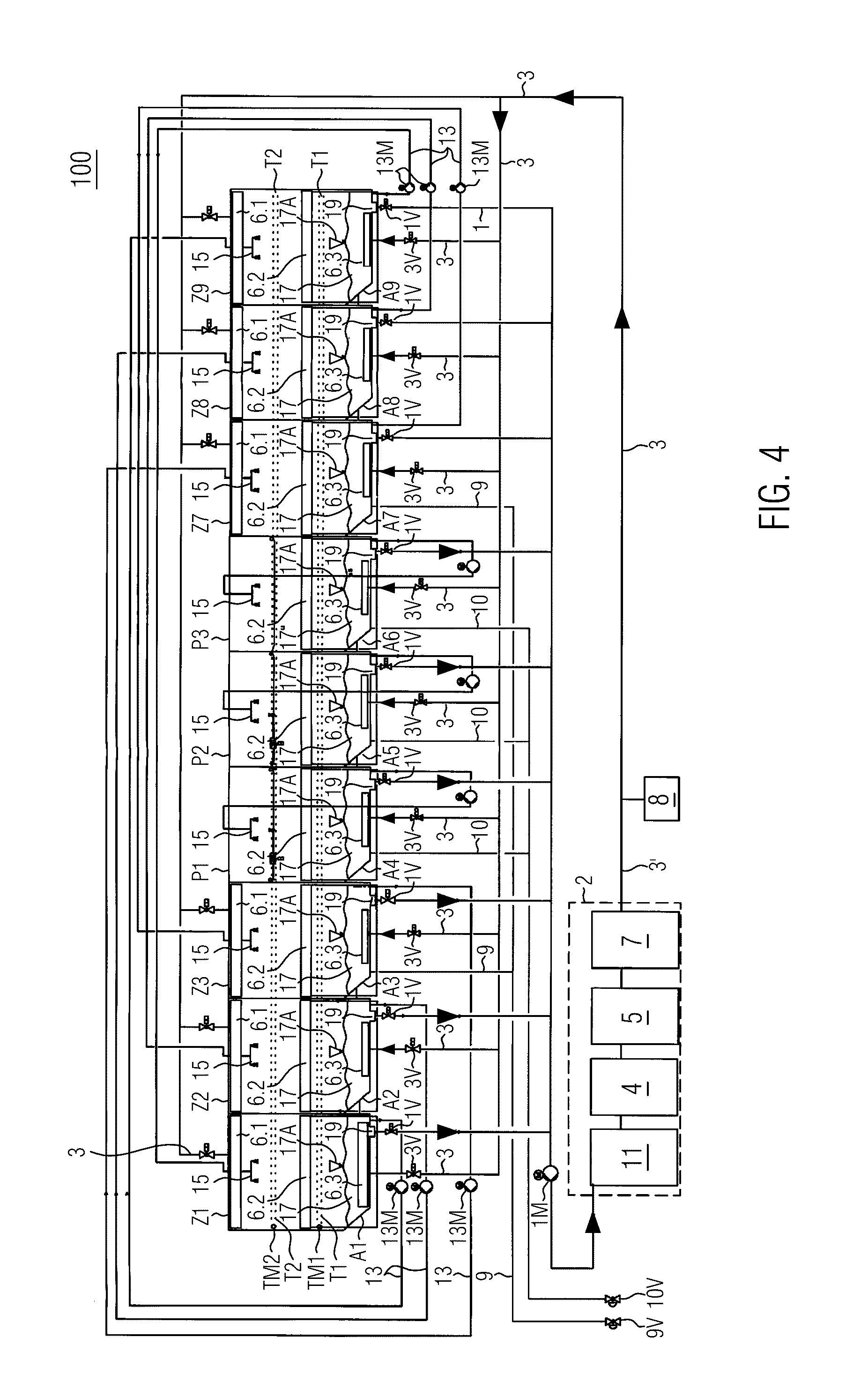Pasteurization system with purification of the process liquid
a technology of process liquid and pasteurization system, which is applied in the direction of filtration separation, multi-stage water/sewage treatment, separation process, etc., can solve the problems of significant additional expenses, significant impairing of the sprinkling system and eventually the functioning of the pasteurization system, and extension of the machine heigh
- Summary
- Abstract
- Description
- Claims
- Application Information
AI Technical Summary
Benefits of technology
Problems solved by technology
Method used
Image
Examples
Embodiment Construction
[0009]According to the invention, there is provided a pasteurization system with purification of the process liquid, with a feed and evacuation conveyor system for containers; with at least one treatment zone with sprinkling nozzles to spray the containers with a process liquid such as water, whereby the treatment zone comprises a screening unit with a sedimentation area for the deposition of sediment from the process liquid; and with a closed-loop circuit to re-use the process liquid; as well as devices to remove the sediment from the sedimentation area for each zone and to feed the sediment into a central filter unit, whereby the central filter unit comprises at least one filter module to filter solid materials out of the fed sediment, so that the filtered process liquid is conserved; and devices to return the filtered process liquid to one or several treatment zones.
[0010]The containers are closed. The treatment of the containers occurs through sprinkling or spraying from outside...
PUM
| Property | Measurement | Unit |
|---|---|---|
| height | aaaaa | aaaaa |
| size | aaaaa | aaaaa |
| diameter | aaaaa | aaaaa |
Abstract
Description
Claims
Application Information
 Login to View More
Login to View More - R&D
- Intellectual Property
- Life Sciences
- Materials
- Tech Scout
- Unparalleled Data Quality
- Higher Quality Content
- 60% Fewer Hallucinations
Browse by: Latest US Patents, China's latest patents, Technical Efficacy Thesaurus, Application Domain, Technology Topic, Popular Technical Reports.
© 2025 PatSnap. All rights reserved.Legal|Privacy policy|Modern Slavery Act Transparency Statement|Sitemap|About US| Contact US: help@patsnap.com



